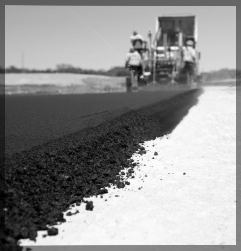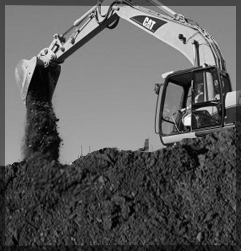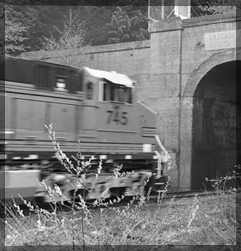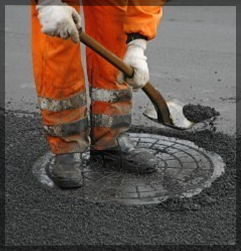
oakland global project components
Utility Improvements
Developing an Integrated Utility Master Plan
As a first step in this process, important infrastructure planning issues need to be identified with the ORA and Port staffs, the Prologis/CCIG Oakland Global project team, and the consultants responsible for the planning and design of the various OAB infrastructure systems.
An integrated assessment of all the required utilities would be done to assess the status, capabilities and condition of the existing utility systems at the OAB. This assessment will look at site infrastructure in light of the proposed development scenarios for the OAB.
An integrated utility master plan would be developed that provides a phased framework and costs for keeping the infrastructure component of the OAB redevelopment on track with the facilities redevelopment. The master plan would allow for the identification of priority infrastructure improvement projects at an early time in the development process so that they can be budgeted and scheduled to meet the needs of the new facilities as they come on line. The master plan would also be updated as the facilities plan is updated so that there are no budget and schedule surprises when a facility project takes a new direction.
The principles of sustainable design as they apply to the OAB infrastructure systems should be considered throughout the course of its redevelopment. The use of: renewable and emerging technology energy systems; energy efficient building design; central plants for heating and cooling with interconnected hot and chilled water distribution systems; energy monitoring to verify and promote the success of energy efficiency designs; and recycled water (storm and sewage) for landscape irrigation, toilet flushing and other non-potable uses are all examples of the sustainable design concepts that could incorporated into the OAB infrastructure systems.
Underground utility systems must be designed for long-term use. Capacity and service lives of 20 to 50 years should be required. Major underground utilities require significant surface disruptions during their construction and repair. These disruptions should be minimized, not only for cost implications, but also for accessibility and safety reasons.
Life Cycle Costing should be used in lieu of initial costs in the planning and design of utility systems for specific projects. This often results in a lower service life cost for the systems; allows for the use of more sustainable equipment and materials; and lower operation and maintenance costs. Utility corridors should be identified and utilized throughout the redevelopment of the OAB. Their designation at the planning phase and subsequent use will avoid the costly relocation of major utility systems to allow for construction of future phased developments of the OAB.
In planning new underground utility corridors, consideration should be given to locating them beneath paved roadways and walkways. Open space areas should be avoided as they become problematic in the future, because it is often difficult to get permission to disturb developed open space areas for utility replacement and repairs.
The phase development of the OAB infrastructure systems should be incorporated with phased development of the OAB itself. The phased development of the OAB should include the required expansion of the service areas and capacities of the utility systems needed to serve each phase of development. The backbone utility systems should be identified, located and sized so that they have the ability to serve the OAB as it is redeveloped and its utility demands increase. Funding for the needed utility expansions must be carried forward with the funding for new OAB facilities that they will serve.
The planning and design of the OAB facilities should be coordinated with the facilities management staff responsible for the supporting utility infrastructure systems. This coordination should start at the planning stage and a formal review process should be implemented, which allows utility and other maintenance related issues to be addressed throughout the course of the project’s design and construction. A set of Engineering Design Guidelines for the various utility systems should be developed and made part of design requirements for future development phases of the project.
Next, an integrated assessment of all the required utilities would be done to assess the status, capabilities and condition of the existing utility systems at the OAB. This assessment will look at site infrastructure in light of the following development scenarios for the OAB: The level of site development that can be supported by the existing infrastructure systems including the necessary improvements/repairs to these systems to allow them to function properly.
The cost effective addition of utility infrastructure needed to support the phased redevelopment of the OAB as proposed by Prologis/CCIG Oakland Global. This would follow the guiding concepts and principals developed for the project as discussed previously and would be broken down by the specific redevelopment phases as outlined in phased development plan prepared for the entire OAB by the Prologis/CCIG Oakland Global.
Finally, an integrated utility master plan would be developed that provides a phased framework and costs for keeping the infrastructure component of the OAB redevelopment on track with the facilities redevelopment. The master plan would allow for the identification of priority infrastructure improvement projects at an early time in the development process so that they can be budgeted and scheduled to meet the needs of the new facilities as they come on line. The master plan would also be updated as the facilities plan is updated so that there are no budget and schedule surprises when a facility project takes a new direction.
The remainder of this memo presents a preliminary listing of the utility/infrastructure planning tasks required to develop the integrated utility infrastructure master plan for the OAB. The utilities addressed are: water supply and distribution, waste water conveyance and reuse, drainage, power, central heating/cooling, natural gas, and communication (voice and data) master plans for the phased development of the OAB as outlined in the draft ORA and Port Controlled Areas of the OAB, dated 14 January 2010. This list is based on the assumption that we are using the existing OAB utility systems as a starting point. This list is subject to change/revision upon further, detailed review of the existing site conditions.
Developing an Integrated Utility Master Plan
As a first step in this process, important infrastructure planning issues need to be identified with the ORA and Port staffs, the Prologis/CCIG Oakland Global project team, and the consultants responsible for the planning and design of the various OAB infrastructure systems.
An integrated assessment of all the required utilities would be done to assess the status, capabilities and condition of the existing utility systems at the OAB. This assessment will look at site infrastructure in light of the proposed development scenarios for the OAB.
An integrated utility master plan would be developed that provides a phased framework and costs for keeping the infrastructure component of the OAB redevelopment on track with the facilities redevelopment. The master plan would allow for the identification of priority infrastructure improvement projects at an early time in the development process so that they can be budgeted and scheduled to meet the needs of the new facilities as they come on line. The master plan would also be updated as the facilities plan is updated so that there are no budget and schedule surprises when a facility project takes a new direction.
The principles of sustainable design as they apply to the OAB infrastructure systems should be considered throughout the course of its redevelopment. The use of: renewable and emerging technology energy systems; energy efficient building design; central plants for heating and cooling with interconnected hot and chilled water distribution systems; energy monitoring to verify and promote the success of energy efficiency designs; and recycled water (storm and sewage) for landscape irrigation, toilet flushing and other non-potable uses are all examples of the sustainable design concepts that could incorporated into the OAB infrastructure systems.
Underground utility systems must be designed for long-term use. Capacity and service lives of 20 to 50 years should be required. Major underground utilities require significant surface disruptions during their construction and repair. These disruptions should be minimized, not only for cost implications, but also for accessibility and safety reasons.
Life Cycle Costing should be used in lieu of initial costs in the planning and design of utility systems for specific projects. This often results in a lower service life cost for the systems; allows for the use of more sustainable equipment and materials; and lower operation and maintenance costs. Utility corridors should be identified and utilized throughout the redevelopment of the OAB. Their designation at the planning phase and subsequent use will avoid the costly relocation of major utility systems to allow for construction of future phased developments of the OAB.
In planning new underground utility corridors, consideration should be given to locating them beneath paved roadways and walkways. Open space areas should be avoided as they become problematic in the future, because it is often difficult to get permission to disturb developed open space areas for utility replacement and repairs.
The phase development of the OAB infrastructure systems should be incorporated with phased development of the OAB itself. The phased development of the OAB should include the required expansion of the service areas and capacities of the utility systems needed to serve each phase of development. The backbone utility systems should be identified, located and sized so that they have the ability to serve the OAB as it is redeveloped and its utility demands increase. Funding for the needed utility expansions must be carried forward with the funding for new OAB facilities that they will serve.
The planning and design of the OAB facilities should be coordinated with the facilities management staff responsible for the supporting utility infrastructure systems. This coordination should start at the planning stage and a formal review process should be implemented, which allows utility and other maintenance related issues to be addressed throughout the course of the project’s design and construction. A set of Engineering Design Guidelines for the various utility systems should be developed and made part of design requirements for future development phases of the project.
Next, an integrated assessment of all the required utilities would be done to assess the status, capabilities and condition of the existing utility systems at the OAB. This assessment will look at site infrastructure in light of the following development scenarios for the OAB: The level of site development that can be supported by the existing infrastructure systems including the necessary improvements/repairs to these systems to allow them to function properly.
The cost effective addition of utility infrastructure needed to support the phased redevelopment of the OAB as proposed by Prologis/CCIG Oakland Global. This would follow the guiding concepts and principals developed for the project as discussed previously and would be broken down by the specific redevelopment phases as outlined in phased development plan prepared for the entire OAB by the Prologis/CCIG Oakland Global.
Finally, an integrated utility master plan would be developed that provides a phased framework and costs for keeping the infrastructure component of the OAB redevelopment on track with the facilities redevelopment. The master plan would allow for the identification of priority infrastructure improvement projects at an early time in the development process so that they can be budgeted and scheduled to meet the needs of the new facilities as they come on line. The master plan would also be updated as the facilities plan is updated so that there are no budget and schedule surprises when a facility project takes a new direction.
The remainder of this memo presents a preliminary listing of the utility/infrastructure planning tasks required to develop the integrated utility infrastructure master plan for the OAB. The utilities addressed are: water supply and distribution, waste water conveyance and reuse, drainage, power, central heating/cooling, natural gas, and communication (voice and data) master plans for the phased development of the OAB as outlined in the draft ORA and Port Controlled Areas of the OAB, dated 14 January 2010. This list is based on the assumption that we are using the existing OAB utility systems as a starting point. This list is subject to change/revision upon further, detailed review of the existing site conditions.

JOB GROWTH • ECONOMIC VITALITY • GLOBAL COMPETITIVENESS • ENVIRONMENTAL STEWARDSHIP




